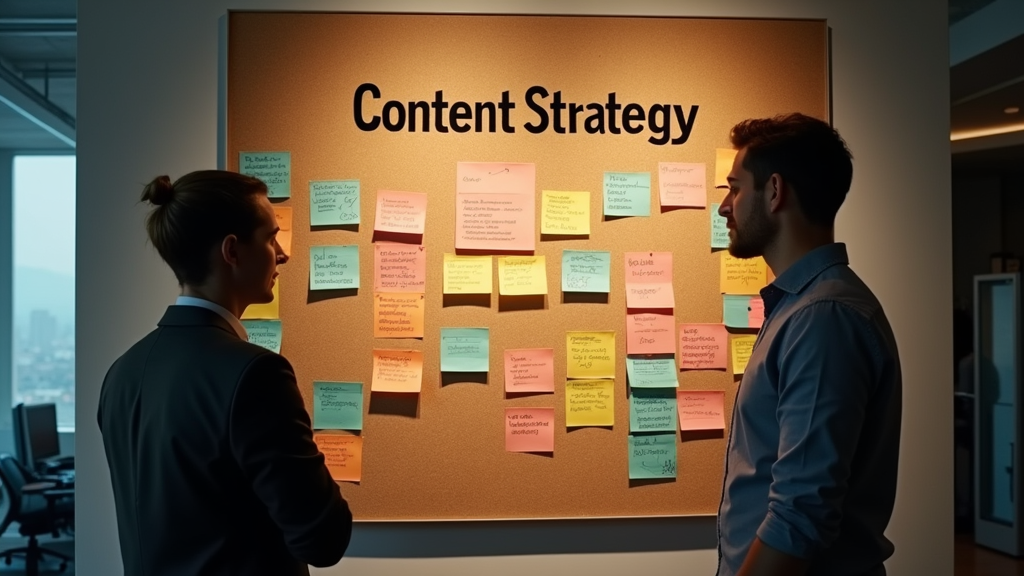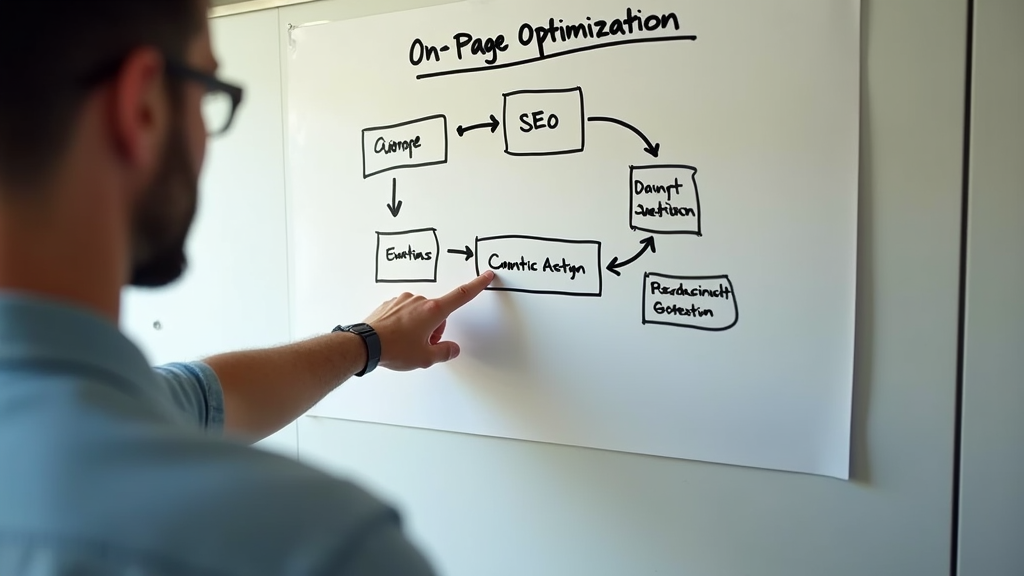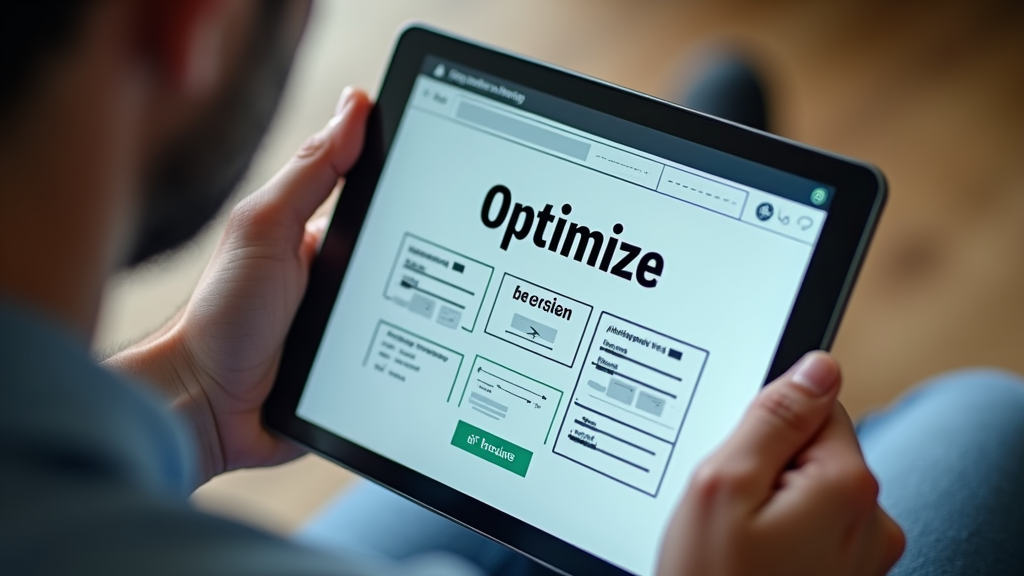
Content optimization is key to online success. This guide will show you how to improve your content for better search rankings, more traffic, and higher conversion rates. We'll cover strategies for SEO, user experience, and conversions to help your content perform better.
Understanding Content Optimization
What is Content Optimization?
Content optimization involves improving your online content to achieve specific goals. These goals often include ranking higher in search results, engaging readers more effectively, and converting visitors into customers. It's about making your content work harder for your business.
Optimizing content goes beyond just adding keywords. It requires a deep understanding of your audience, search engine algorithms, and user behavior. By fine-tuning various elements of your content, you can significantly boost its performance across different metrics.
Why Content Optimization Matters
Optimizing your content is crucial in today's competitive online landscape. Here's why it's so important:
-
Better search engine rankings: Optimized content is more likely to appear at the top of search results, increasing visibility.
-
Increased organic traffic: Higher rankings lead to more clicks and visits from search engines.
-
Improved user engagement: Well-optimized content keeps readers on your site longer and encourages them to explore further.
-
Higher conversion rates: Content that's tailored to your audience's needs and interests is more likely to turn visitors into customers.
By focusing on content optimization, you're setting your website up for long-term success. It's an ongoing process that requires attention and effort, but the rewards are well worth it.
Types of Content Optimization
Content optimization can be broken down into three main categories:
-
SEO optimization: This focuses on making your content more attractive to search engines. It involves using relevant keywords, improving site structure, and building quality backlinks.
-
Conversion optimization: This type of optimization aims to turn more visitors into customers or leads. It includes crafting compelling calls-to-action, designing effective landing pages, and personalizing content.
-
User experience optimization: This ensures your content is easy to read, navigate, and interact with. It covers aspects like readability, site speed, and mobile responsiveness.
Each type of optimization plays a crucial role in the overall performance of your content. Let's dive deeper into specific strategies for each area.
SEO Content Optimization Strategies
Keyword Research and Implementation
Effective keyword research is the foundation of SEO content optimization. It helps you understand what your audience is searching for and how to reach them. Here's how to do it right:
-
Find relevant keywords: Use tools like Google Keyword Planner or Ahrefs to discover keywords related to your topic. Look for a mix of high-volume and long-tail keywords.
-
Analyze search intent: Understand why people are searching for these keywords. Are they looking for information, trying to buy something, or comparing options?
-
Incorporate keywords naturally: Once you've identified your target keywords, weave them into your content. Use them in titles, headings, and throughout the body text, but avoid keyword stuffing.
Remember, the goal is to create content that serves your audience's needs while also signaling its relevance to search engines.
On-Page SEO Elements
On-page SEO involves optimizing individual web pages to rank higher and earn more relevant traffic. Here are key elements to focus on:
-
Title tags and meta descriptions: Write compelling, keyword-rich titles and descriptions for each page. These appear in search results and can significantly impact click-through rates.
-
Header tags: Use H1, H2, and H3 tags to structure your content logically. Include keywords in these headers where appropriate.
-
URL structure: Create clean, descriptive URLs that include your target keyword.
-
Internal linking: Link to other relevant pages on your site to help search engines understand your site structure and keep visitors engaged.

Content Structure and Formatting
How you structure and format your content can greatly impact both SEO and user experience. Here are some tips:
-
Create scannable content: Use short paragraphs, subheadings, and bullet points to break up text and make it easier to read.
-
Use descriptive subheadings: Help readers (and search engines) understand the structure of your content with clear, informative subheadings.
-
Include multimedia: Add relevant images, videos, or infographics to enhance your content and keep readers engaged.
By making your content easy to read and navigate, you'll keep visitors on your page longer, which can positively impact your search rankings.
Image Optimization
Images can enhance your content, but they need to be optimized for SEO. Here's how:
-
Use descriptive file names: Name your image files with relevant keywords instead of generic names like "IMG001.jpg".
-
Add alt text: Provide alternative text for each image, describing what it shows. This helps search engines understand the image and can improve accessibility.
-
Compress images: Large image files can slow down your page. Use tools like TinyPNG to compress images without losing quality.
Properly optimized images can improve your site's performance in both regular and image search results.
Mobile Optimization
With more people browsing on mobile devices, mobile optimization is crucial. Google now uses mobile-first indexing, meaning it primarily uses the mobile version of your site for ranking and indexing.
To optimize for mobile:
- Use a responsive design that adapts to different screen sizes.
- Ensure text is readable without zooming.
- Make buttons and links easy to tap on smaller screens.
- Test your site's mobile-friendliness using Google's Mobile-Friendly Test.
Page Speed Optimization
Page speed is a ranking factor for both desktop and mobile searches. Faster-loading pages provide a better user experience and can lead to higher conversion rates. Here are some ways to improve page speed:
- Minimize HTTP requests: Reduce the number of elements on your page that require separate HTTP requests.
- Enable browser caching: This allows returning visitors to load your pages more quickly.
- Optimize code: Minify CSS, JavaScript, and HTML to remove unnecessary characters.
- Use a content delivery network (CDN): This can help deliver your content more quickly to users around the world.
Use tools like Google PageSpeed Insights to analyze your site's speed and get specific recommendations for improvement.
Conversion Optimization Techniques
Understanding User Intent
To optimize for conversions, you need to understand why users are visiting your site. What problem are they trying to solve? What information are they seeking? Align your content with these intentions to guide visitors towards conversion.
Conduct user research, analyze your site's analytics, and create buyer personas to better understand your audience's needs and motivations. This insight will help you create more targeted, effective content.
Creating Compelling Calls-to-Action (CTAs)
Your CTAs are crucial for driving conversions. They should be clear, action-oriented, and aligned with the user's intent. Here are some tips for effective CTAs:
- Use action verbs like "Get," "Start," or "Try" to encourage clicks.
- Create a sense of urgency with words like "Now" or "Today."
- Make your CTAs visually stand out with contrasting colors or button designs.
- Place CTAs strategically throughout your content, not just at the end.
Test different CTA variations to see what resonates best with your audience.
A/B Testing Content Elements
A/B testing, also known as split testing, involves comparing two versions of a web page to see which performs better. You can test various elements, including:
- Headlines
- CTA button colors or text
- Images or videos
- Page layout
Tools like Google Optimize or Optimizely can help you set up and run A/B tests. Remember to test one element at a time for clear results.
Optimizing Landing Pages
Landing pages are often the first point of contact for potential customers. To optimize them:
- Keep it focused: Each landing page should have a single, clear purpose.
- Use compelling headlines: Grab attention and clearly communicate your value proposition.
- Include social proof: Add testimonials, reviews, or case studies to build trust.
- Optimize forms: Keep forms short and only ask for essential information.
- Ensure fast loading times: A slow landing page can significantly hurt conversion rates.
Regularly test and refine your landing pages to improve their performance over time.
Personalizing Content for Different Audience Segments
Personalization can significantly boost conversion rates. By tailoring your content to specific audience segments, you can create more relevant, engaging experiences. Here's how to get started:
- Segment your audience: Divide your audience based on factors like demographics, behavior, or purchase history.
- Create targeted content: Develop content that speaks directly to each segment's needs and interests.
- Use dynamic content: Implement tools that can display different content to different users based on their characteristics or behavior.
- Personalize email campaigns: Use subscriber data to send more relevant, personalized emails.
Remember, personalization should enhance the user experience, not feel intrusive. Always respect user privacy and provide value with your personalized content.
User Experience Optimization
Improving Readability
Readable content keeps users engaged and can lead to better SEO performance. Here are some tips to improve readability:
- Use short paragraphs: Aim for 2-3 sentences per paragraph to create white space and make your content less intimidating.
- Write in simple language: Avoid jargon and complex terms unless necessary for your audience.
- Use active voice: It's generally clearer and more engaging than passive voice.
- Include subheadings: Break up your content into logical sections with descriptive subheadings.
Tools like Hemingway Editor can help you assess and improve your content's readability.
Enhancing Navigation
Easy navigation helps users find what they're looking for quickly. This can improve user satisfaction and reduce bounce rates. Consider these strategies:
- Create a clear menu structure: Organize your site logically and use descriptive labels.
- Include a search function: This helps users quickly find specific information.
- Use breadcrumbs: These show users their location within your site structure.
- Implement internal linking: Link to related content to help users explore your site more deeply.
Remember, the goal is to make it as easy as possible for users to find the information they need.

Implementing Multimedia Elements
Multimedia can enhance your content and improve user engagement. Here's how to use it effectively:
- Choose relevant images: Use high-quality images that add value to your content.
- Incorporate videos: Videos can explain complex concepts or demonstrate products effectively.
- Create infographics: These can present data or processes in an easily digestible format.
- Use interactive elements: Quizzes, calculators, or interactive charts can boost engagement.
When using multimedia, ensure it's optimized for fast loading and accessible to all users, including those with disabilities.
Ensuring Mobile Responsiveness
With mobile traffic continuing to grow, your site must provide a great experience on all devices. Here's how to ensure mobile responsiveness:
- Use responsive design: This allows your site to adapt to different screen sizes automatically.
- Optimize touch targets: Ensure buttons and links are large enough to tap easily on mobile screens.
- Simplify navigation for mobile: Consider using a hamburger menu or other mobile-friendly navigation options.
- Test on multiple devices: Check your site's performance on various smartphones and tablets.
Mobile responsiveness is not just about fitting content on a smaller screen—it's about creating an optimal experience for mobile users.
Content Optimization Tools and Resources
SEO Tools
Several tools can help you optimize your content for search engines:
- Google Search Console: Provides insights into your site's search performance and issues.
- Ahrefs: Offers comprehensive SEO analysis, including keyword research and backlink checking.
- SEMrush: Another all-in-one SEO tool with features for keyword research, site audits, and competitor analysis.
These tools can help you identify optimization opportunities and track your progress over time.
Readability Tools
To ensure your content is easy to read and understand:
- Hemingway Editor: Highlights complex sentences and suggests simpler alternatives.
- Grammarly: Checks for grammar, spelling, and style issues.
- Yoast SEO (for WordPress): Includes a readability analysis feature alongside its SEO tools.
These tools can help you refine your writing and make it more accessible to your audience.
A/B Testing Tools
For testing different versions of your content:
- Google Optimize: Free tool that integrates with Google Analytics for easy A/B testing.
- Optimizely: Offers more advanced features for larger-scale testing and personalization.
- VWO (Visual Website Optimizer): Provides a range of testing and conversion optimization tools.
A/B testing can help you make data-driven decisions about your content and design.
Analytics Tools
To measure and analyze your content's performance:
- Google Analytics: Provides comprehensive data on site traffic, user behavior, and conversions.
- Hotjar: Offers heatmaps and user recordings to visualize how users interact with your content.
- Crazy Egg: Another tool for heatmaps and user behavior analysis.
These tools can help you understand how users engage with your content and identify areas for improvement.
For businesses looking to streamline their content optimization process, Contly AI offers an advanced AI writing tool designed for SEO-optimized content creation.
Measuring Content Optimization Success
Key Performance Indicators (KPIs)
To gauge the success of your content optimization efforts, track these KPIs:
- Organic traffic: Monitor the number of visitors coming from search engines.
- Bounce rate: A lower bounce rate often indicates more engaging content.
- Time on page: Longer times suggest users find your content valuable.
- Conversion rate: Track how many visitors take desired actions on your site.
- Search rankings: Monitor your positions for target keywords.
Regularly review these metrics to understand how your optimization efforts are paying off.
Setting Benchmarks and Goals
Establish clear benchmarks based on your current performance and set realistic goals for improvement. For example, you might aim to:
- Increase organic traffic by 20% over the next quarter
- Improve average time on page by 30 seconds
- Boost conversion rates by 5% in the next six months
Having specific, measurable goals helps focus your optimization efforts and measure progress.
Continuous Improvement Strategies
Content optimization is an ongoing process. Here are strategies for continuous improvement:
- Regular content audits: Periodically review and update your existing content.
- Stay informed about SEO trends: Search algorithms change frequently, so keep up with the latest best practices.
- Analyze competitor content: See what's working well in your industry and look for gaps you can fill.
- Gather user feedback: Use surveys or user testing to get direct input from your audience.
By consistently refining your approach based on data and feedback, you can ensure your content remains effective and relevant.
Businesses can automate much of their content creation and optimization process with tools like Contly AI, saving time and resources while improving SEO performance.
Conclusion
Content optimization is a multifaceted process that requires ongoing effort and attention. By focusing on SEO, user experience, and conversion optimization, you can create content that not only ranks well in search engines but also engages your audience and drives business results.
Remember that optimization is not a one-time task but a continuous journey of improvement. Stay curious, keep testing, and always put your audience's needs first. With persistence and the right strategies, you can create content that truly stands out in the crowded digital landscape.
